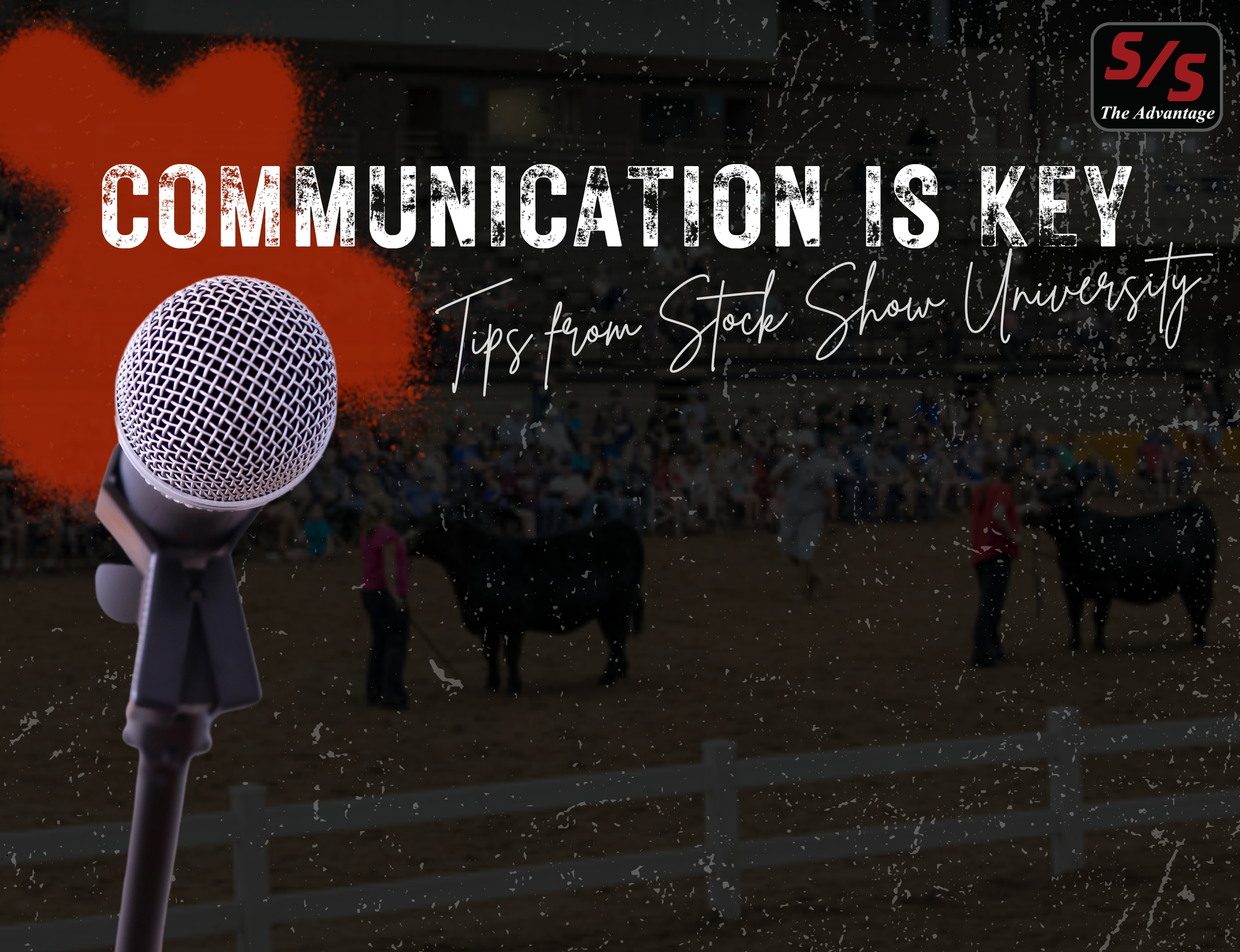Are you scared of speaking in front of large groups of people? The fear of public speaking is very common, as it is believed to affect up to 75% of the world’s population. Both in the Agricultural Industry and all other industries, employers are looking for individuals that can communicate effectively—through oral and written forms. During this Stock Show University® tip, we will be covering the basics of creating a Prepared Public Speech to help you for your next 4-H/FFA contest or if you are competing in this contest at a specific Junior National Show this coming summer.
There are 5 BIG steps when creating the Prepared Public Speech.
Number 1—Know Your Audience. This is a very critical step as you will need to choose a topic that is engaging to the audience you are presenting to along with being age/experience appropriate. For example, if you knew your audience was a 4-H club that was made up of a lot of first year goat exhibitors, you might want to decide a topic that is entry level, such as daily care practices, compared to delivering a speech about perfecting a back leg when clipping and fitting, which is an advanced topic.
Number 2—Select Your Core Message. “What do you want people to take away from your speech?” There are times when people start a speech that is well-thought-out and researched, but often lose the audience’s attention because there are too many messages. When correctly writing a speech, decide a core message, so listeners can focus on the one topic throughout the speech. Let’s say you are giving your speech about daily care practices for show goats. Your core message might be that you want to make sure that the audience understands the science behind healthy, hydrated skin for goats, as you believe that is what your audience is seeking. Once you have what you want your core message to be, you can start the research process.
Number 3—Research and Evaluate the Information. Stock Show U®’s advice for this step: Research until you drop. There is no such thing as collecting too much information. When collecting this information, use resources that are factual versus websites that can be edited by the public. It also is a very good idea to find several sources that are valid instead of just one source. Also, when collecting research, don’t just think that you have to collect your information from the internet. Interviews with trusted professionals are also a great resource when writing speeches.
Number 4—Develop Structure to Deliver Your Message. The question you might ask yourself when getting to this stage is, “Where do I even begin?” When piecing our speech together, you need to structure your speech into three different parts: Introduction, Body, and Conclusion. Within the introduction of your speech, find a way to get your audience’s attention, such as starting your speech with a story or questions to engage the audience and get them “hooked”. If we are still on the topic of show goats, this might be a descriptive story about the first time you showed a goat at your county fair. The body of your speech needs to be the “meat and potatoes” of the speech—including all the factual information that you have collected in step number 3. In our goat story that we have been discussing, this might be the factual information about Sullivan’s Vita Hair Nourishing Vitamin Package, why these products are so important to use on your goat’s hair and skin, and morning/night routines in the show barn. Lastly, within the conclusion of your speech, you will need to make sure to bring your audience back in and make it clear to your audience what the core message of your speech was.
And last but not least, Number 5—Spice it Up. When delivering a speech, the last thing you want to do is make sure your speech sounds like yourself. Instead of making your speech sound like a paper you would write in English class at school, change up the sentence structure of your speech and make it personable to your audience. Another great piece of advice is to add quotes to your speech to make your speech more relatable to your audience and create a divide within your speech from all the factual information.
For more tips and video tutorials from Stock Show University, visit https://www.sullivansupply.com/stock-show-u/online/.


